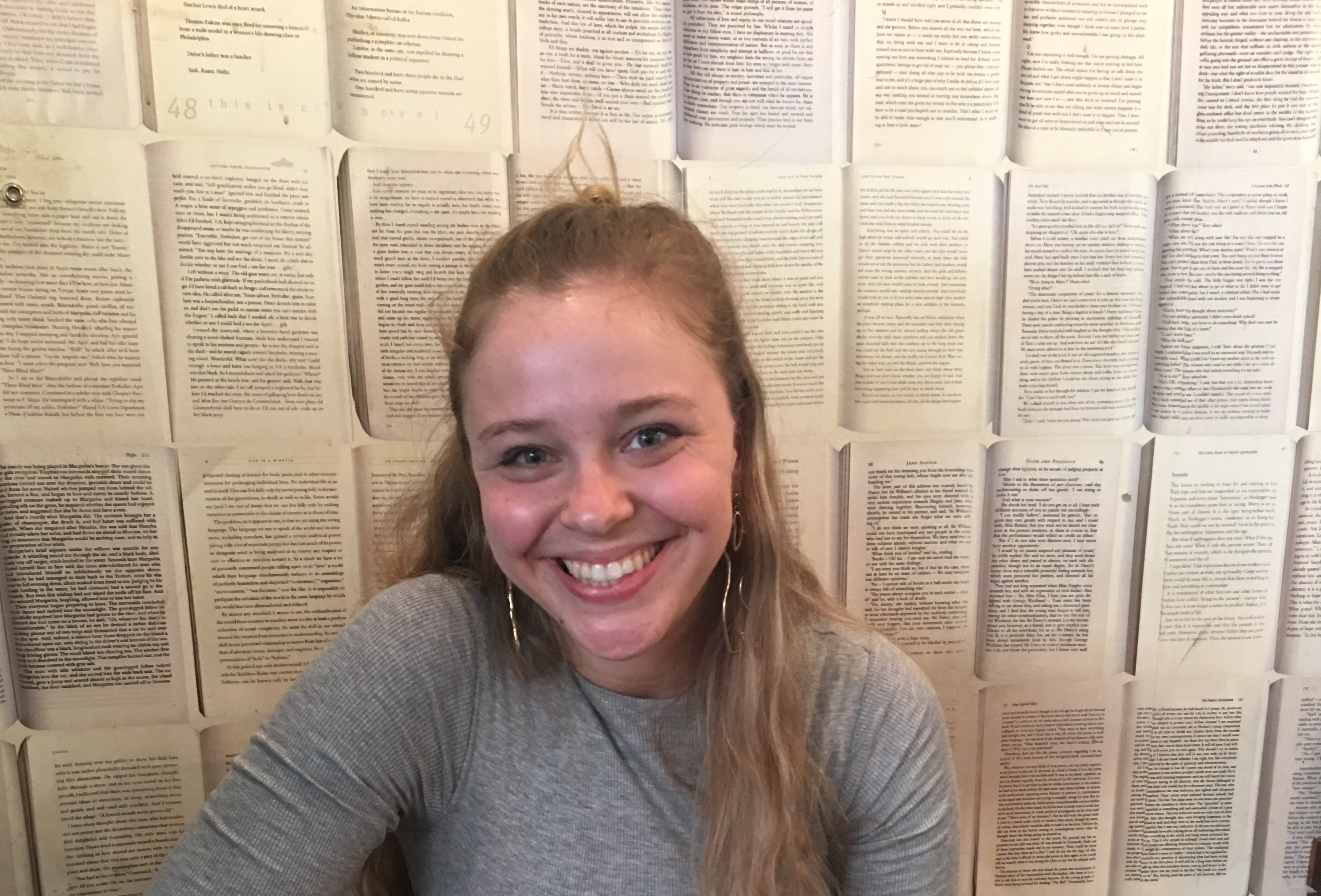
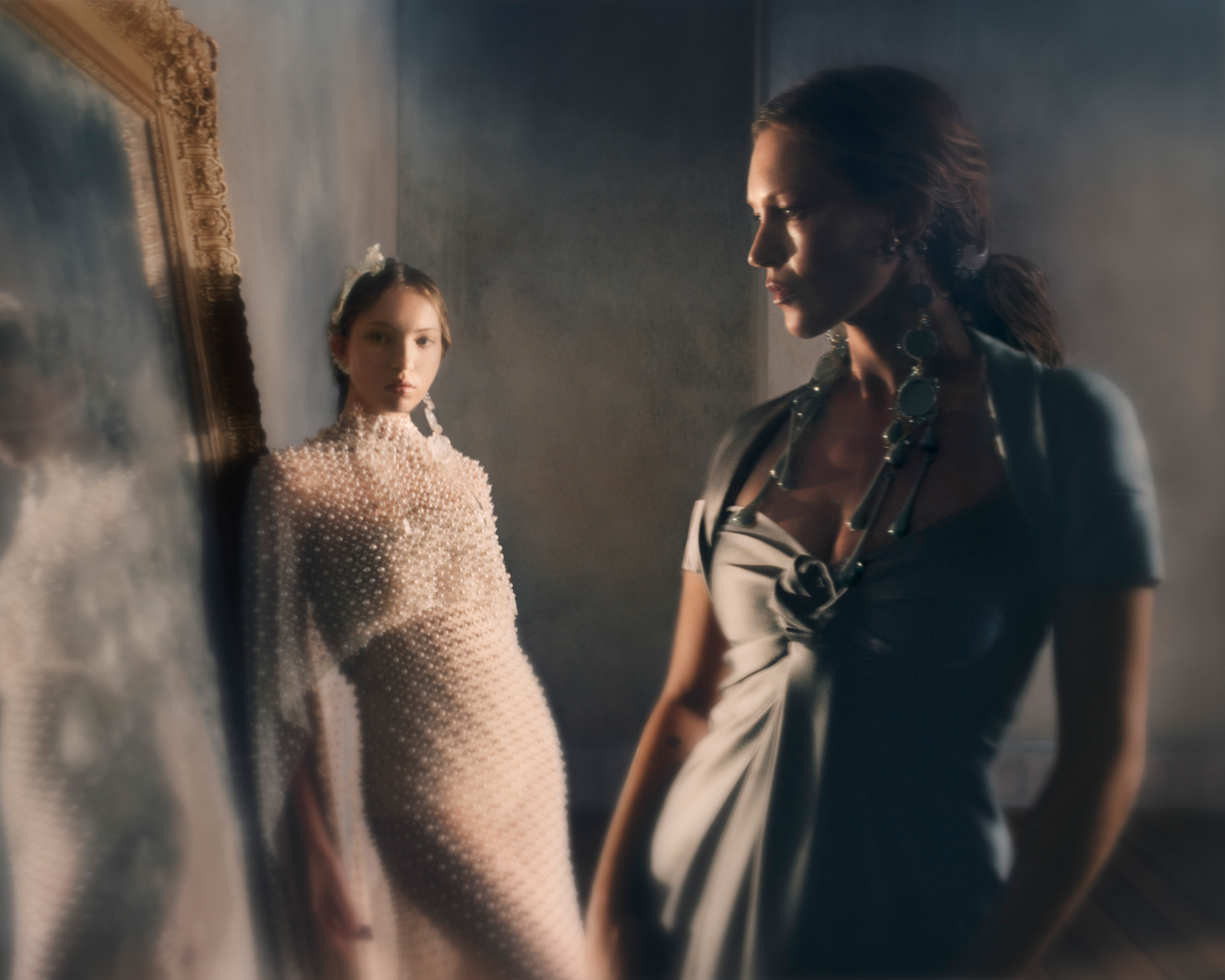
“Vain trifles as they seem, clothes have, they say, more important offices than merely to keep us warm. They change our view of the world and the world’s view of us,” wrote Virginia Woolf in her 1925 novel Orlando.
That which grabs our attention and maintains a stronghold on our minds in our formative years of adolescence tends to occupy a perennially special place in our hearts. For Fendi designer Kim Jones, that singular, insatiable obsession was sparked by a revolutionary brigade of English writers, artists, philosophers, and intellectuals dubbed the Bloomsbury Set, with literary legend Woolf at its center. Indeed, the Set and their travels (in some cases, travails) served as the foundational inspiration for Jones’s current tenure at Fendi.
In September 2020, the announcement of Jones’s appointment as artistic director of Italian fashion house Fendi’s womenswear division was met with an unprecedented degree of well-deserved hype. That coming January, Jones’s debut haute couture collection did anything but disappoint. Working alongside Silvia Venturini Fendi herself, Jones recruited his most beloved muses — from Demi Moore and Kate Moss to Naomi Campbell and Christy Turlington — to take the runway in an assortment of ethereal and otherworldly garments, sartorially expressing his enduring adoration for the Bloomsbury Set while simultaneously paying tribute to Fendi’s storied heritage through the Spring/ Summer 2021 couture collection that was shown at the Palais Brongniart in Paris.
Now, with British-German photographer Count Nikolai von Bismarck’s trained eye, Jones authentically captures the essence of the Bloomsbury Set in a new book: from England to Paris, then Rome. Jones’s Bloomsbury-inspired collection appears right at home in aged images by Bismarck and altered to look as though they’d been taken 100 years ago. Available to purchase from early April in the U.S., the pages of the artfully curated Rizzoli tome The Fendi Set: From Bloomsbury to Borghese unfurl as von Bismarck follows in the footsteps of the Set, tracing the interwoven connections from Charleston to the Roman birthplace of the House of Fendi.
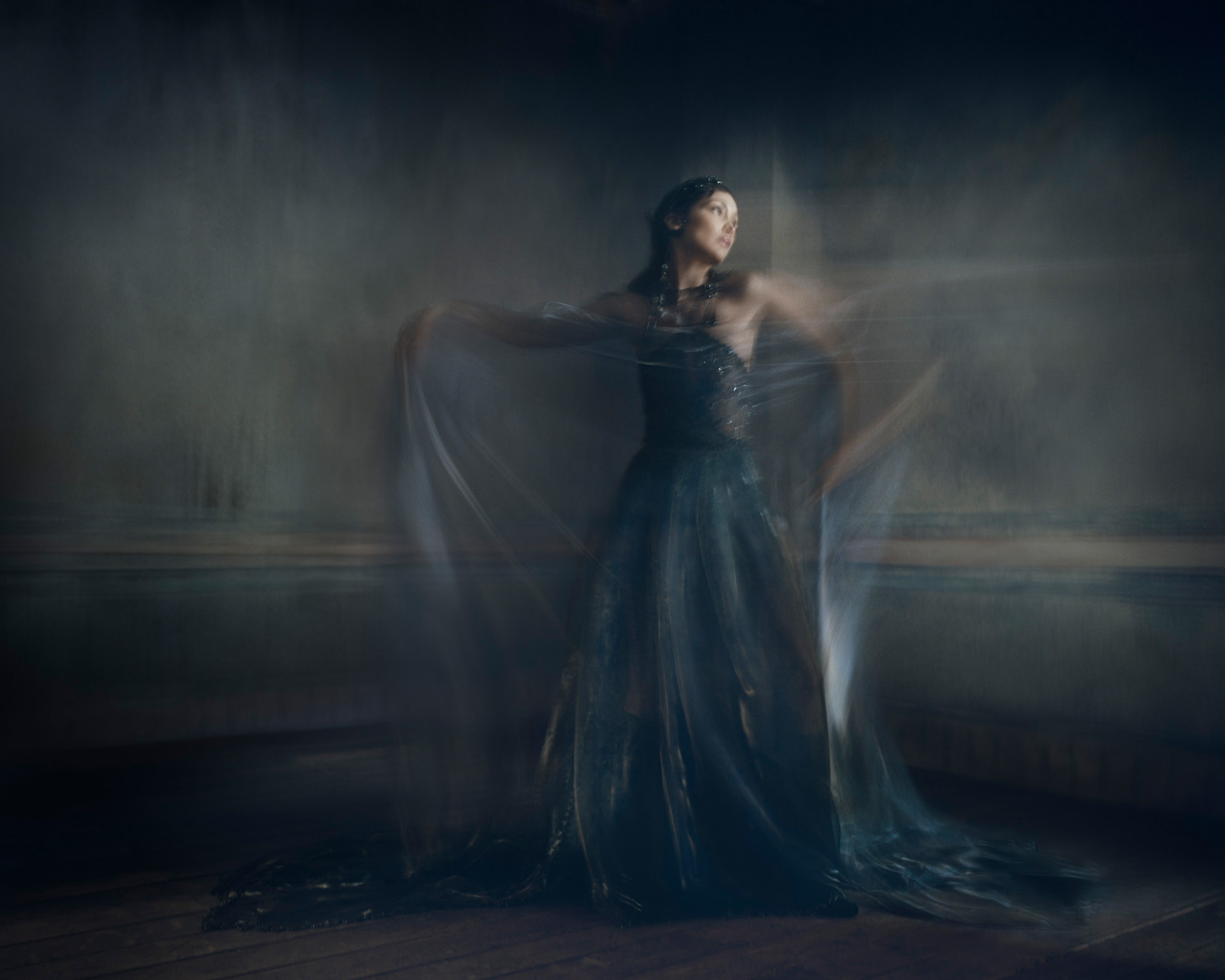
Von Bismarck hopped on a Zoom call with me after two hours of signing books alongside Jones. It was the very night of the launch party for The Fendi Set at London’s Royal Academy of Arts.
Recalling the process of building the book, he told GRAZIA USA, “We wanted to expand on Kim’s vision of what he’d already done — what he couldn’t necessarily portray beyond the show. We wanted to give it even more context, flesh it out a bit.”
The 20th-century British creative collective included the likes of modernist writer Woolf, her sister, painter Vanessa Bell, artist Duncan Grant, and author Vita Sackville-West. Von Bismarck examines the relationship between the group’s roots in the luscious green, mist-coated hills of England and their adoration for Fendi’s home of Rome.
First, we follow von Bismarck’s enchanting lens through the English countryside with a frisson of déjà vu. From there, we time-travel to modern-day Paris, chronicling Jones’s Fendi debut and featuring the likes of Bella Hadid and Cara Delevingne. After that, we thoughtfully consider the ever-entwined ties of the Bloomsbury Set to Rome. In an homage to Fendi’s rich origin story, von Bismarck features an elegant portrait of three generations of women in the Fendi dynasty: Anna Fendi, Delfina Delettrez Fendi, Leonetta Luciano Fendi, and Silvia Venturini Fendi, draped in Jones’s first ready-to-wear collection for the Italian Maison. From city to city, “I was going from one form of romance to another,” explained von Bismarck.
With the volume’s foreword written by Woolf admirer, Academy Award winner, and star of the 1992 adaptation of Woolf’s Orlando, Tilda Swinton, it also features actress Gwendoline Christie modeling Fendi Couture and channeling the formidable essence of Woolf at Knoll in England, where Orlando was based.
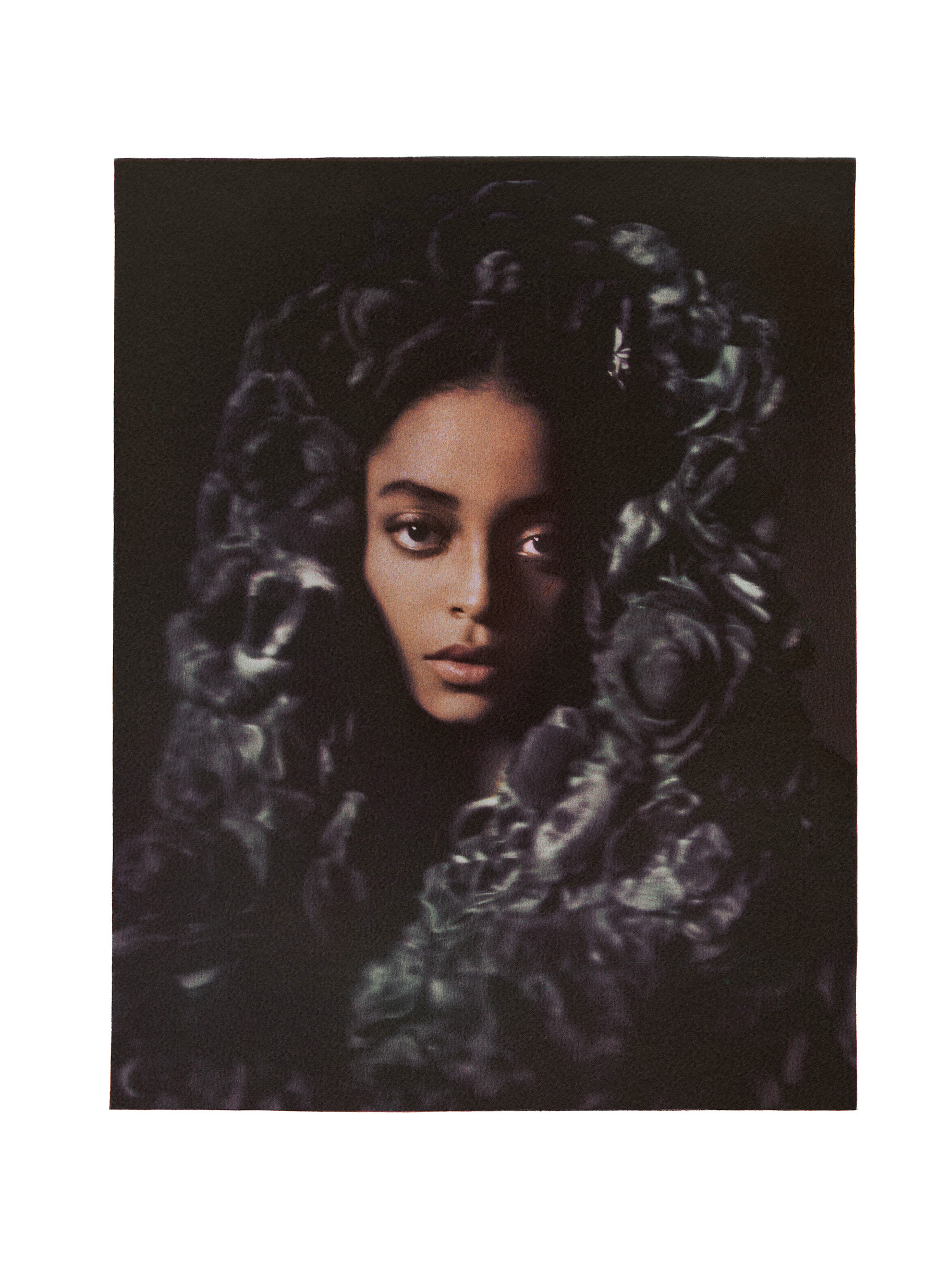
This is only the latest collaboration between the photographer and designer. While Jones built his career in London, von Bismarck built a parallel path elsewhere, studying photography at the Parsons Paris School of Art and Design, and working under the inimitable Annie Leibovitz for two years. After photographing Princess Beatrice of York and producing an exhibit of his work in Ethiopia, von Bismarck sought the guidance of a master of his craft.
“I started off by getting advice from this incredible war photographer, Don McCullin. I worked a lot in Africa, Burma, and in Cuba taking a lot of reportage photos,” he recalled. After looking through von Bismarck’s photojournalist work, McCullin affirmed his obvious talent while suggesting he fine tune his technique. “He said, ‘You’ve got to learn discipline and patience. You’ve got to do a black and white portraiture book. That’ll teach you to stay in one place, and really learn your craft. Once you do that, you can go and do whatever you like.’”
After going to Jones with his new notes from McCullin, the Fendi designer suggested the two of them create a portraiture book together, beginning the pair’s vast collaborative relationship.
For their sophomore publication, von Bismarck began by documenting the fittings for Jones’s inaugural Fendi collection in honor of the Bloomsbury Set.
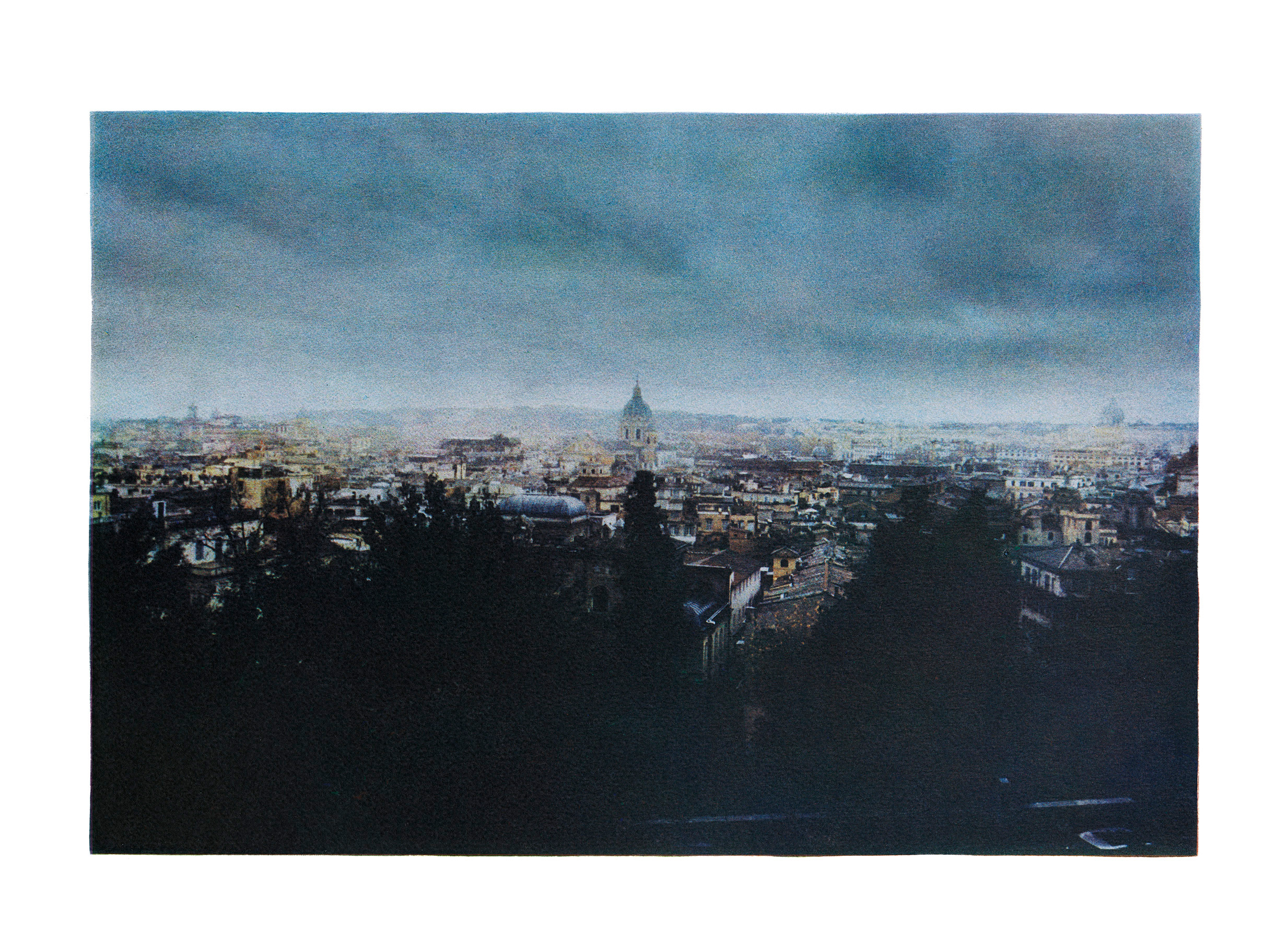
“It was an incredible experience to watch all of this going on, and to really learn. I was watching Kim [Jones] and Silvia [Venturini Fendi] discussing how they’d put the clothes together, Alister Mackie was deconstructing the clothes, and Amanda Harlech was walking me through it. While I was videoing and taking photos, I’d be there for days on end,” he said.
And although the inspiration may have seemed obscure to some, for von Bismarck, the Bloomsbury influence was no surprise. “Kim felt very closely tied to the Bloomsbury Group because he grew up in the same village as a lot of them had lived. He spent a lot of time going to Charleston and doing art classes there,” he explained. “He was obsessed from a young age, and you really see that obsession now.
“He’s got first editions of Orlando, an unbelievable collection of books written by the Bloomsbury Group, pieces of art, furniture painted by Duncan Grant and Vanessa Bell. It’s an unbelievable obsession. It’s incredible.”
Recalling his time at the atelier and looking back on his collaborator’s first year at Fendi, von Bismarck remarked, “I love his willingness to look into the archive and the history of the house, as well as his own personal journey. The way that he would dive, both into the archive at Fendi and look at all the leather goods and such, but also how he had personalized it. I think he’s done that seamlessly.”
With Amanda Harlech as lead stylist, Jerry Stafford served as lead researcher. In the midst of the COVID-19 lockdown, the team ate, lived, and breathed everything to do with the Bloomsbury Set, from chatting about Sackville-West and Woolf ’s wardrobe choices at lunch, to taking walks to the Roman Anglican cemetery where Woolf’s heroes, English poets John Keats and Percy Bysshe Shelley, were buried. Continuing to connect the dots between the Bloomsbury Set and its Roman ties, Jones and von Bismarck quickly honed in on the cemetery as an essential photography destination for the tome. When it was discovered that Duncan Grant was provided a grant at the Villa de Medici and had a studio nearby, that too became a necessary stop along the way.
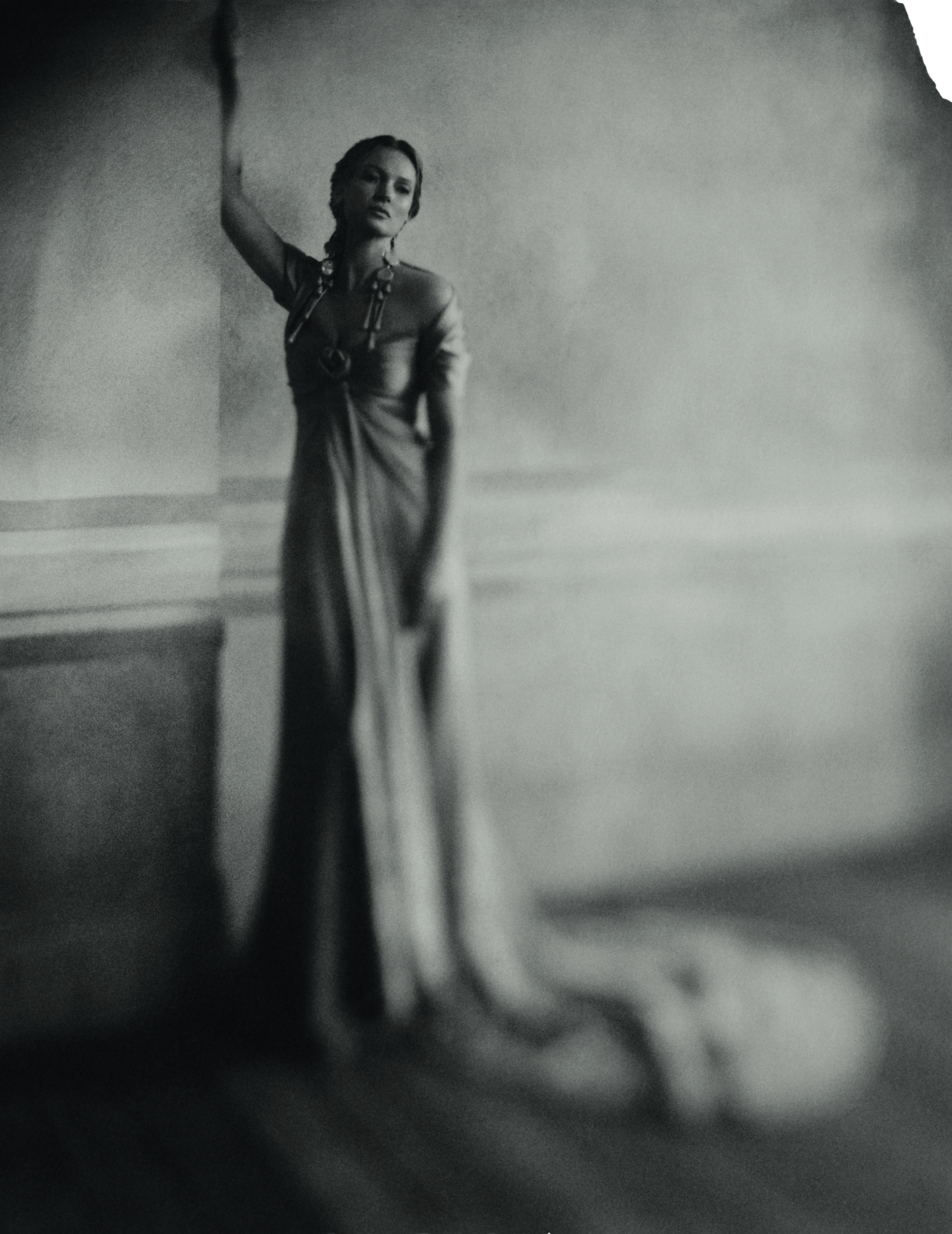
Back in England, taking photos at the Charleston farmhouse, von Bismarck and the Fendi team were introduced to scholars and devotees of the bohemian renegades. Eventually, they were pointed in the direction of Bloomsbury scholar and New York-based professor, Dr. Mark Hussey. Said the photographer, “It was amazing that we could go through most of this on Zoom during the pandemic. He helped us go through the New York Public Library, research, and find all the actual letters that the Bloomsbury Set had written from Italy, back to their various members.”
Filled with original letter excepts, intimate diary entries, still lifes, and landscape imagery with a continuous human element running throughout, the book also was inspired by Victorian- era British photographer Julia Margaret Cameron’s pivotal soft-focus method for inspiration, von Bismarck said: “She was taking photos around the 1870s and 1880s, and that was quite amazing because she happened to be Virginia Woolf ’s great aunt. She was a great reference point.”
Bringing an unmitigated level of authenticity to his work, von Bismarck diversified his photographic techniques throughout the illustrious voyage. “We used expired 8×10 Polaroid film, and we used a French printing technique from the 1890s to give it that sense of romance,” he explained. “The expired Polaroid film made it feel quite ghostly. I wanted the pictures to feel like they were found photographs. Almost as if Duncan Grant could have taken the photographs in his studio, and you may have just found them in a drawer.

“A lot of the processes we used were from the time that they lived. Some of them were from the ‘40s, some of them were from the ‘30s. The cameras were all from that period as well, so they were those big ones where you put the sheet over your head, and then you click the button and it goes, ‘PSHHH!’ You have to stand completely still for 10 or 15 seconds.”
Von Bismarck knew from the project’s inception that he wanted to mix and match an array of photographic methods throughout the final work. “I knew about the Bloomsbury Set through school. I had read many articles, and a couple of the books before all of this,” he said. “But when Kim was so obsessed, I really got excited with him. I thought, ‘This is incredible.’ They had the Omega Workshops, which is where they collaborated when they were quite young, and they were doing everything from the marbling on books, to setting the individual type font, to then creating their own type fonts, and so on. They were painting in different styles. One of them was an art critic; one of them was an economist. It was such a rich topic that I felt that all these different photographic processes — as complicated as it made my life — would reflect and mirror the Bloomsbury Set quite well. Because it was the same kind of feeling.”
Becoming the modern equivalent of the Bloomsbury Set, this band of Fendi creatives joined forces to create an ethereal and mystifying tome, recounting the steps of these prolific creatives of the past. Immortalizing their immeasurable influence through poignant imagery and radiant sartorial means, the Fendi crew brought together intellectuals, scholars, artists, fashion designers, and photographers of our own time — just like their predecessors.
“They’re all quite amazing people,” von Bismarck remarked of the Bloomsbury Set. “I think what really inspires me about them, is the collaborative spirit that they shared.” Indeed, it’s a quality shared by The Bloomsbury Set, the Fendi family, Jones, and von Bismarck, too.
Virginia Woolf did through the written word what Kim Jones does through his designs and Nikolai von Bismarck has done with his lens. Serving as an opulent cauldron, The Fendi Set is a radiant creative quest, a respectful nod to artistic legacy and heritage, an ode to the collaborative spirit, and — finally, but certainly not least — a love letter to the incomparable Bloomsbury Set.
Pick up GRAZIA USA’s March 2022 issue on newsstands and email [email protected] to subscribe.








